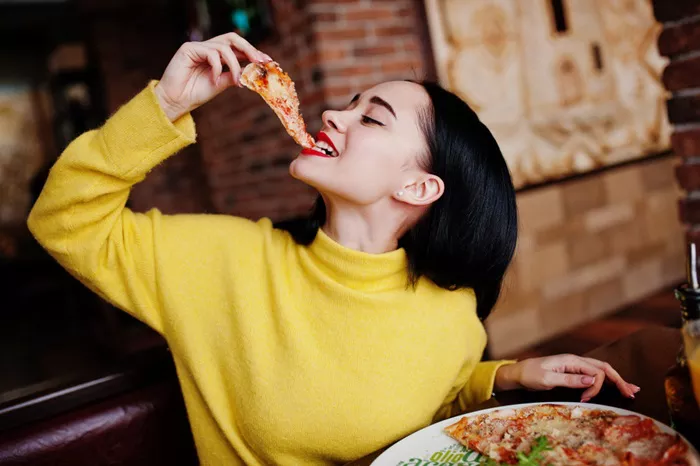Rhinoplasty, commonly known as a nose job, is a surgical procedure to reshape the nose. It can be performed for medical reasons, such as to improve breathing, or for cosmetic reasons, to enhance the appearance of the nose. Post-operative care is crucial for a successful recovery, and dietary choices play a significant role in this process. One common question is whether it’s safe to eat pizza after rhinoplasty. This article will explore this topic in detail.
Understanding Rhinoplasty Recovery
Initial Recovery Phase
The first week after rhinoplasty is the most critical period. Swelling, bruising, and discomfort are common. During this time, patients must follow their surgeon’s post-operative instructions meticulously to ensure proper healing.
Importance of Diet
A proper diet supports healing and can minimize complications. Soft, easy-to-eat foods are generally recommended to avoid unnecessary strain on the face and nose.
Can You Eat Pizza After Rhinoplasty?
Nutritional Considerations
Pizza can be a part of a balanced diet, but its suitability after rhinoplasty depends on several factors. Here are the key considerations:
1.Texture and Chewiness
Avoid Hard Crusts: Hard or chewy crusts can require significant chewing effort, which may strain the face and nose. Soft-crust or thin-crust pizza is preferable.
Cheese and Toppings: Ensure the toppings are not overly hard or crunchy. Soft cheese and well-cooked vegetables are better choices.
2.Nutritional Content
Protein and Vitamins: Pizza can provide essential nutrients such as protein and vitamins, which are vital for healing. Opt for pizzas with lean protein toppings like chicken or turkey and plenty of vegetables.
Avoid High Fat and Salt: High-fat and high-salt content can contribute to swelling. Choose pizzas with moderate cheese and avoid processed meats like pepperoni or sausage.
Eating Techniques
Even if you choose a soft, nutritious pizza, how you eat it matters. Here are some tips:
Small Bites: Take small bites to reduce the need for extensive chewing.
Eat Slowly: Eating slowly can minimize facial movements, reducing strain on the nose.
Support Your Head: Keep your head elevated while eating to help reduce swelling.
Potential Risks of Eating Pizza Post-Rhinoplasty
Chewing and Strain
Hard or chewy foods can cause strain on the surgical site. This can lead to increased pain, swelling, and possibly even complications like bleeding or shifting of the nasal structure.
Swelling and Inflammation
High-sodium foods can exacerbate swelling. Since pizza often contains significant amounts of salt, it’s crucial to consume it in moderation and choose low-sodium options when possible.
See also: What To Eat Before Rhinoplasty?
Recommendations for a Post-Rhinoplasty Diet
Soft Foods
During the initial recovery phase, focus on soft foods that require minimal chewing. Examples include:
1.Mashed potatoes
2.Scrambled eggs
3.Smoothies
4.Soups
5.Yogurt
Nutrient-Rich Options
Opt for foods rich in vitamins and minerals to support healing. Some excellent choices are:
1.Leafy greens
2.Fruits like berries and melons
3.Lean proteins like chicken, fish, and tofu
4.Whole grains like oatmeal and quinoa
Hydration
Staying hydrated is essential for recovery. Drink plenty of water and avoid beverages that can dehydrate you, such as alcohol and caffeinated drinks.
When to Reintroduce Pizza
Consult Your Surgeon
Always follow your surgeon’s advice regarding diet post-surgery. They may provide specific guidelines based on your individual case and progress.
Gradual Reintroduction
If you’re eager to eat pizza, consider reintroducing it gradually. Start with small, soft portions and monitor your body’s response. If you experience any discomfort, it’s best to wait longer before trying again.
Monitor for Complications
Pay attention to any signs of complications, such as increased pain, swelling, or difficulty breathing. If any of these occur, contact your surgeon immediately.
Conclusion
Eating pizza after rhinoplasty is not strictly prohibited, but it requires careful consideration. Opt for soft-crust pizzas with healthy toppings and consume them in small bites to minimize strain on your nose. Always prioritize nutrient-rich, soft foods during the initial recovery phase to support healing and reduce the risk of complications. Consult your surgeon for personalized advice and follow their guidelines to ensure a smooth recovery.
Frequently Asked Questions About Rhinoplasty Recovery
1.Can I eat cheese after rhinoplasty?
Yes, you can eat cheese after rhinoplasty. Cheese is generally soft and shouldn’t pose a problem unless it’s very hard or sharp, which could potentially irritate the surgical site. Always consult your surgeon for specific dietary recommendations.
2.Is coffee good after rhinoplasty?
Moderate consumption of coffee is usually fine after rhinoplasty. However, excessive caffeine intake can lead to dehydration, which may hinder your recovery. It’s best to drink plenty of water and consult your surgeon regarding your caffeine intake.
3.Can I brush my teeth after rhinoplasty?
Yes, you can and should brush your teeth after rhinoplasty to maintain oral hygiene. Be gentle around your nose to avoid any accidental bumps or pressure on the surgical area.
4.Can I eat spicy food after rhinoplasty?
Spicy foods are generally not recommended immediately after rhinoplasty. They can potentially irritate the nasal passages and surgical site, leading to discomfort. Stick to mild foods initially and reintroduce spicy foods gradually as tolerated.
5.What foods reduce swelling after rhinoplasty?
Foods that are rich in antioxidants and have anti-inflammatory properties can help reduce swelling after rhinoplasty. Consider incorporating foods like pineapple (contains bromelain), berries, leafy greens, and foods high in vitamin C (like oranges and tomatoes) into your diet.
Related topic:
Top 10 Foods To Eat After Rhinoplasty
Top 5 Foods To Avoid After Rhinoplasty
Can I Eat Egg After Rhinoplasty?


